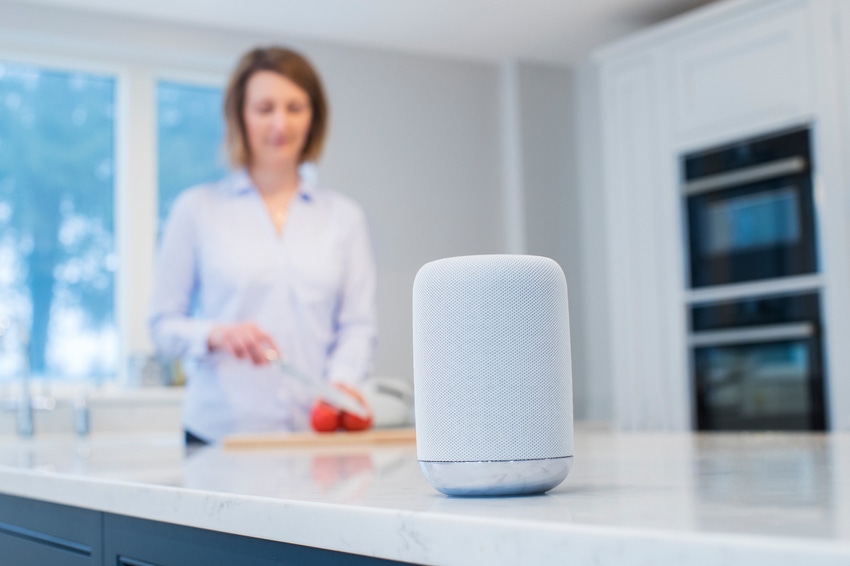Years usually pass before the world realises a technology breakthrough actually happened and it catches on; the voice user interface might just have arrived at that watershed moment.
October 1, 2018

Years usually pass before the world realises a technology breakthrough actually happened and it catches on; the voice user interface might just have arrived at that watershed moment.
The fantastic breakthrough of touchscreen mobile phones is often attributed to Apple, though if you go back to 1992 IBM unveiled a phone called Simon which featured the first touchscreen. Apple didn’t invent the concept of touch screens, it simply innovated, making the iPhone a genuine smartphone as opposed to a PDA. This might seem like an odd introduction, but the same trend is emerging in the smart speaker world.
Amazon and Google did not invent the concept of the voice user interface, they simply used their brands to effect change and offer a product which was dutifully adopted by the masses which call themselves fans. In releasing their own smart speakers, the two internet giants did what other companies couldn’t; they normalised the voice user interface.
According to Nielsen’s MediaTech Trender survey, the smart speaker has penetrated the mass market and is normalising the concept of the smart home, as well as the idea of your voice being the control function. Across the US, 40% of homes now own at least one smart home device, with 24% owning a smart speaker, up from 22% in the previous quarter. Of those who currently own a smart home device, 65% plan to purchase more. Looking at the speakers themselves, usage is up, the average user interacts with the device for 72 minutes on the weekend and 65 minutes during the week, while 81% of users report using voice-command searches for real-time information, such as weather and traffic conditions, during a typical week. The more normal it becomes to use your voice in the home, the more acceptable it becomes elsewhere in the world.
Another interesting statistic from the report are the services synced to the speakers. Music streaming services are unsurprisingly the most popular, 53%, while the second most popular is shopping apps at 52%. With the user seemingly becoming accustomed to ordering goods through the smart speaker, there are a horde of new opportunities emerging, from grocery shopping to on-demand purchases linked to advertisements.
Finally, the most device synced to the smart speakers is the smartphone. This might seems like a very obvious statement, though only 32% of the respondents have linked their smartphone to the device. This is a small percentage of what is possible, though the potential to learn more about these individuals who have synced their devices is quite exciting. The virtual assistant is no-longer limited to the users home and can start to learn about habits in the big, wide world. This offers a much more in-depth opportunity to create valuable, personalised services.
As it stands, the smart speaker is little more than an entertainment product. 90% of users listen to music on the devices, 81% search for real-time information such as the weather, 68% listen to the news and 68% use it for alarms or timers. However, these devices are introducing new concepts and features which are gradually becoming accepted and normalised by the user. The voice user interface is an incredibly important one.
Just like the touch interface opened up new opportunities to make money, the voice interface will do the same. But this is a while down the road, mass adoption of both new devices and the normalisation of new concepts need to take place first. New ideas open the mind up to even more new ideas, including services and products, as well as blurring the lines of what would be considered intrusive or unacceptable. The smart speaker is playing a critical role here.
About the Author(s)
You May Also Like








.png?width=300&auto=webp&quality=80&disable=upscale)


_1.jpg?width=300&auto=webp&quality=80&disable=upscale)


.png?width=800&auto=webp&quality=80&disable=upscale)